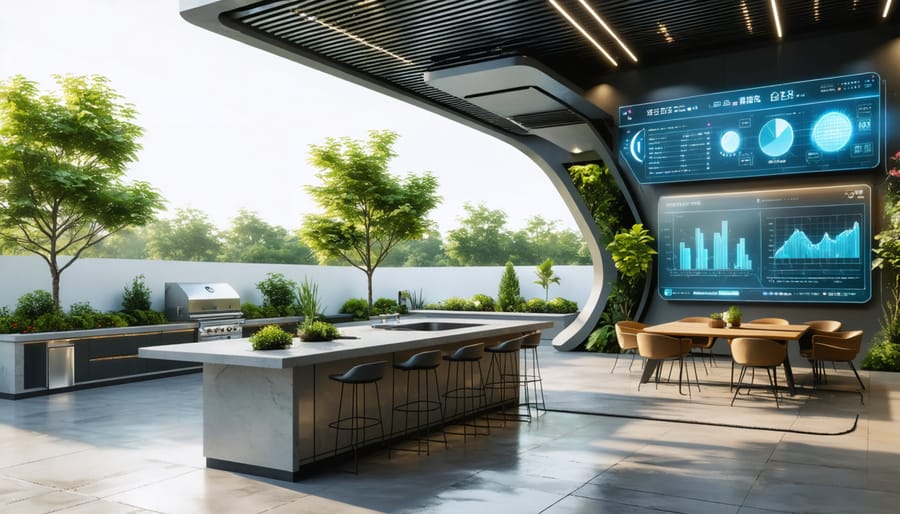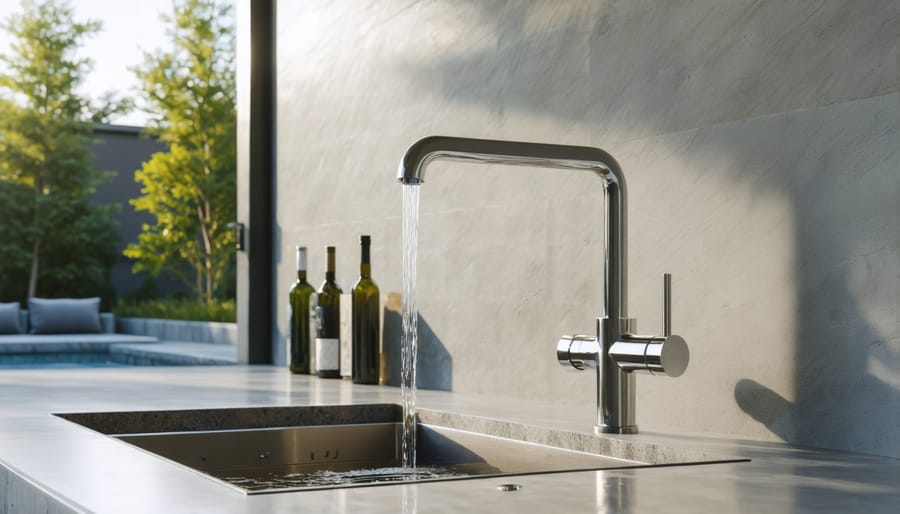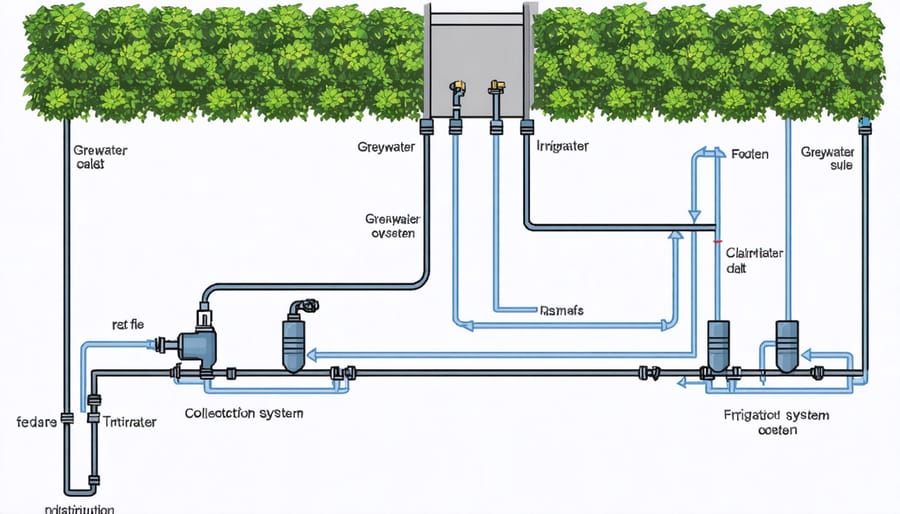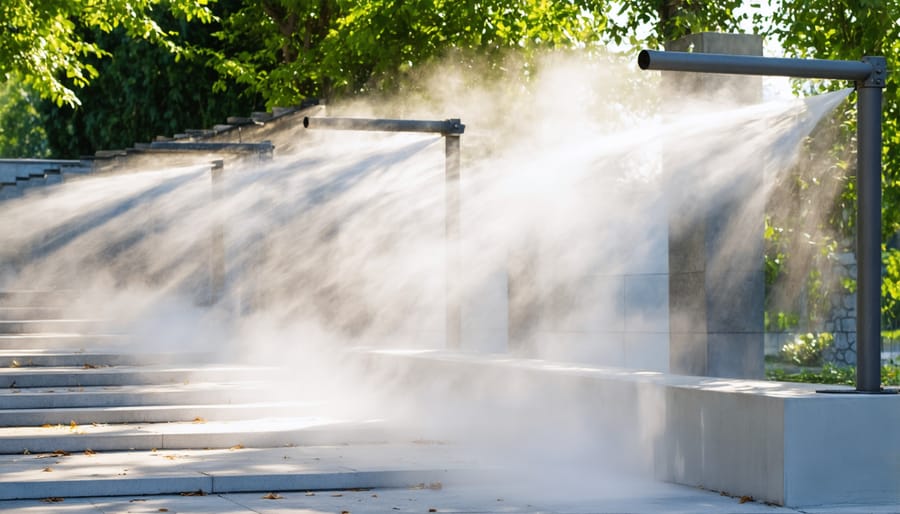Smart Plumbing That Saves Water and Powers Your Outdoor Workspace

Transform your plumbing system into an environmental powerhouse with innovative water-saving solutions that slash utility bills while protecting our planet’s resources. Modern eco-friendly plumbing integrates seamlessly with eco-friendly outdoor workspace design, creating sustainable environments that maximize efficiency without compromising performance. From dual-flush toilets that reduce water usage by 67% to smart leak detection systems that prevent costly waste, today’s green plumbing technologies offer practical solutions for environmentally conscious homeowners. Advanced greywater recycling systems transform shower and sink water into irrigation resources, while solar-powered water heaters eliminate up to 50% of your home’s energy consumption. These sustainable upgrades not only minimize your carbon footprint but also deliver significant long-term savings, making eco-friendly plumbing a smart investment for both your wallet and the environment.
Water-Efficient Plumbing Solutions for Outdoor Spaces
Low-Flow Fixtures and Smart Controls
Low-flow fixtures are game-changers when it comes to water conservation, offering significant savings without compromising performance. Modern low-flow faucets, showerheads, and toilets can reduce water consumption by up to 50% compared to traditional fixtures while maintaining excellent water pressure and functionality.
Smart water monitoring systems take conservation to the next level. These innovative devices connect to your plumbing system and provide real-time data about water usage, helping you identify leaks and wasteful habits. Many systems can even send alerts to your smartphone when they detect unusual water flow patterns or potential problems.
Consider installing motion-sensor faucets in high-traffic areas like kitchens and bathrooms. These touchless fixtures not only save water by automatically shutting off when not in use but also improve hygiene. Dual-flush toilets offer different flush volumes for liquid and solid waste, while water-efficient showerheads with adjustable flow settings let you customize your shower experience while saving water.
For maximum efficiency, pair these fixtures with smart irrigation controls that adjust watering schedules based on weather conditions and soil moisture levels.

Greywater Systems Integration
Greywater systems offer an innovative way to maximize water efficiency in your outdoor workspace while reducing your environmental impact. By capturing and reusing water from sinks, showers, and washing machines, you can create a sustainable irrigation system for your garden or lawn. The process involves installing a collection tank and filtration system that redirects this gently used water away from the main sewage line.
For outdoor applications, consider installing a simple gravity-fed system that channels greywater directly to your garden beds or lawn areas. Many homeowners find success with branched drain systems, which distribute water evenly through multiple outlets. To ensure safety and compliance, use only biodegradable, phosphate-free soaps and cleaners in connected fixtures.
When planning your greywater system, factor in your local climate and water needs. A typical household can recycle up to 40 gallons of greywater daily – enough to maintain a small garden or green space around your workspace. Remember to include appropriate signage and keep detailed records of your system’s layout for future maintenance. Regular filter cleaning and system checks will keep your greywater system running efficiently for years to come.

Natural Ventilation Enhanced by Smart Plumbing
Evaporative Cooling Systems
Evaporative cooling systems offer an eco-friendly approach to outdoor climate control solutions that can significantly reduce your energy consumption while maintaining comfortable temperatures. These systems work by harnessing the natural cooling effect of water evaporation, making them particularly effective in dry climates.
The setup typically includes a water distribution system that releases a fine mist into the air, creating a refreshing microclimate in your outdoor space. As the water droplets evaporate, they absorb heat from the surrounding air, naturally lowering the temperature by up to 20 degrees Fahrenheit. This process requires minimal energy compared to traditional air conditioning systems.
Installing an evaporative cooling system is relatively straightforward and can be integrated with existing plumbing. The basic components include a water supply line, misting nozzles, and a pump system. Many homeowners opt for timer-controlled operations to maximize efficiency and prevent water waste.
To enhance the system’s eco-friendly benefits, consider collecting rainwater in storage tanks to supply your cooling system. This approach not only reduces your water bill but also lessens the environmental impact. Regular maintenance is simple – just clean the nozzles periodically and check for leaks to ensure optimal performance.
Remember to position misting nozzles strategically around your outdoor workspace, focusing on areas where people gather most frequently. This targeted approach ensures efficient water use while providing maximum cooling benefits.
Humidity Control Through Plumbing Design
Controlling humidity in your outdoor workspace isn’t just about comfort – it’s essential for protecting your tools and materials while maintaining an eco-friendly environment. Smart plumbing design plays a crucial role in managing moisture levels naturally and efficiently.
Start by installing proper drainage systems around your workspace. A slight slope in the floor (about 1/4 inch per foot) helps water flow away from your building, while French drains can redirect groundwater effectively. Consider adding a rain garden near downspouts to naturally filter and absorb excess water.
Ventilation is key to humidity control, but it doesn’t have to rely on energy-intensive solutions. Installing passive roof vents allows warm, moist air to escape naturally. Combine these with low-level air intake vents to create a natural chimney effect that promotes air circulation without using electricity.
For areas requiring more active moisture management, consider installing a condensate recovery system. This eco-friendly solution collects moisture from the air and repurposes it for garden irrigation or other non-potable uses. Similarly, dehumidification systems can be connected to your rainwater harvesting setup, creating a closed loop that maximizes water efficiency.
Remember to insulate water pipes properly to prevent condensation, which can contribute to unwanted moisture. Using sustainable materials like sheep’s wool or recycled denim insulation offers excellent moisture-managing properties while staying true to eco-friendly principles.
Installation and Maintenance Tips
DIY-Friendly Installation Steps
Ready to make your home more eco-friendly? These simple DIY installations can help you save water and reduce your environmental impact. Start by installing low-flow aerators on your faucets – just unscrew the existing aerator and replace it with the new one. It’s that easy!
For toilets, installing a dual-flush conversion kit is straightforward. Remove the old handle mechanism, attach the new dual-flush system following the manufacturer’s instructions, and adjust the water levels. Most kits come with clear instructions and require only basic tools.
Want to collect rainwater? Set up a rain barrel system by connecting your downspout to the barrel using a diverter. Position the barrel on a level, elevated surface and install the spigot at the bottom for easy access to your collected water.
Installing a tankless water heater point-of-use system can be done in a few hours. First, shut off the water supply, drain the pipes, disconnect the old unit, mount the new one, and reconnect the water lines. Remember to follow local building codes and safety guidelines.
For outdoor spaces, installing a drip irrigation system is simple: connect the main line to your water source, lay out the tubing, and attach emitters where needed. This system can reduce water usage by up to 70% compared to traditional sprinklers.

Sustainable Maintenance Practices
Regular maintenance is key to keeping your eco-friendly plumbing system operating at peak efficiency. Start by implementing a monthly inspection routine to check for leaks, drips, or unusual sounds in your water fixtures. Clean aerators and showerheads every three months to prevent mineral buildup that can reduce water flow and efficiency.
For water-saving fixtures, wipe them down weekly with eco-friendly cleaners to prevent scale buildup and maintain their effectiveness. Check and adjust water pressure regularly – maintaining it between 40-60 PSI ensures optimal performance while preventing unnecessary strain on your pipes and fixtures.
Don’t forget to inspect outdoor components seasonally. Clean rainwater harvesting systems, check filtration units, and clear any debris from collection points. For greywater systems, clean filters monthly and ensure proper drainage to prevent backups.
Keep a maintenance log to track inspections and repairs. This helps identify patterns and potential issues before they become major problems. Consider scheduling professional maintenance checks annually to ensure all eco-friendly systems are functioning correctly and to catch any issues that might be missed during routine inspections.
When replacing parts, always opt for water-efficient components that match your system’s specifications to maintain optimal performance and environmental benefits.
Embracing eco-friendly plumbing solutions isn’t just about protecting our environment – it’s a smart investment that pays dividends in both cost savings and home value. By implementing water-efficient fixtures, leak detection systems, and sustainable drainage solutions, homeowners can significantly reduce their water consumption while maintaining optimal functionality. These improvements align perfectly with modern sustainable outdoor workspace solutions and contribute to a greener future. The initial investment in eco-friendly plumbing typically pays for itself through reduced utility bills within just a few years, while also helping conserve our precious water resources. Whether you’re starting small with low-flow fixtures or going all-in with a greywater recycling system, every step toward sustainable plumbing makes a difference. Take action today by incorporating these environmentally conscious solutions into your home – you’ll be joining a growing community of homeowners who are proving that practical, cost-effective plumbing can also be kind to our planet.

